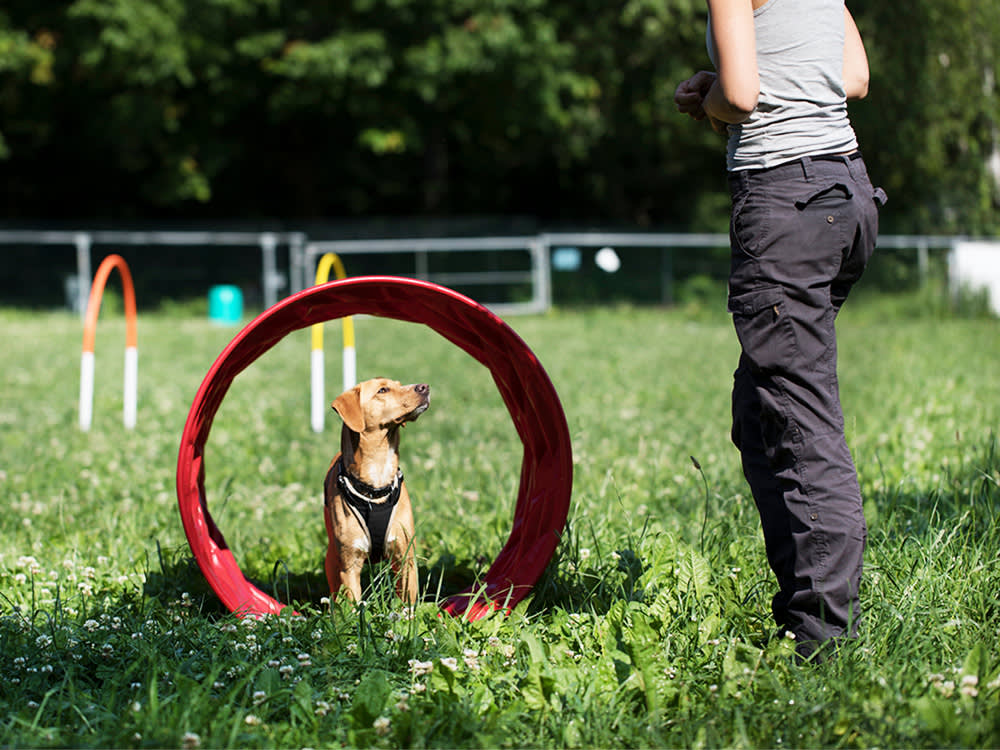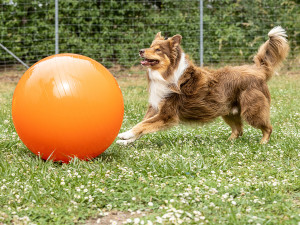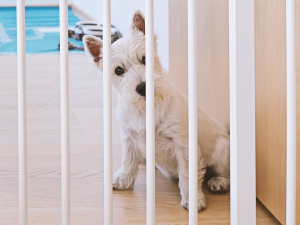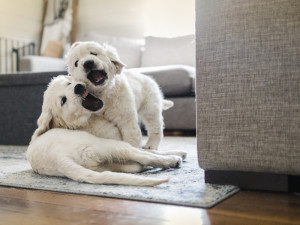5 Reasons to Start Agility Training With Your Puppy
Learn how to better communicate with your puppy with agility training.
After you tackle basic obedience with your puppy, what’s next? Try puppy agility. In puppy agility, dogs are guided through an obstacle course, such as jumps and weave poles, in a particular order within an allotted timeframe. Agility is more than just a sport — here are five reasons why you should begin puppy agility training.
What is agility training?
AKC has described the sport as the fastest-growing dog sport in the US. The birth of dog agility training is credited to an entertainment stunt that occurred in Birmingham, England, at the Crufts dog show in 1978 during a break between competitions. Spectators were intrigued by the complexity, speed, and skills demonstrated by the dogs, and ta-da, agility became an event.
Five Reasons To Do Puppy Agility
1. Improves Puppy Behavior Outside the Ring
Agility training is done off-leash so you must train your dog to listen without the assistance of a leash. When working with your puppy on agility training, you’ll be working on their recall, and obedience and offering them a variety of experiences that can result in a more confident pet that listens well and responds to your cues.
2. Bond With Your Pup While Having Fun
It is pretty darn fun to run around directing your pup into tunnels and over “A” frames. Not only because it is exciting, but because of the deepened relationship that forms between you and your puppy. Making dog training experiences enjoyable for your puppy should always be a goal — you want your puppy excited to learn with you.
How much do you spend on your pet per year?
3. Learning New Ways to Communicate
The fundamental gifts of dog agility aren’t about the obstacles; they are learning how to communicate better and teaching your puppy how to understand what you want. “I help [pet parents] learn how to communicate with their dogs effectively and how to see things through their dogs’ perspectives. When students learn new ways to communicate so that their dogs understand, there are wonderful relationships created that extend well beyond the great fun of the agility field,” says Lee Elgie of Diablo Peak Dog Sports.
4. Agility Training is Great Exercise
Unlike other dog sports, both you and your dog will be active participants. Because the handler usually runs alongside their dog, it means everyone gets a workout. You’ll navigate between obstacles while your dog will take up challenges, such as having to traverse weave poles, run through multiple tunnels, and cross a dog walk high off the ground.
5. You and Your Puppy Become a Team.
Puppy agility training requires teamwork. It’s the person’s goal to guide the pup successfully through the proper sequence. Because dogs will respond to your body language as to what obstacle course is next, you learn to be familiar with your body language. For example, you’ll be aware of what direction your feet are pointing, a cue that can be more important than a verbal command. Your puppy will become in tune with you without the incentive of food or toys.
How long does it take to get started?
Typically, it takes a minimum of one year to train a dog on the equipment required to take part in dog agility competitively. There are several competitive agility organizations offering events: American Kennel Club (AKC), North American Dog Agility Council (NAADAC), United States Dog Agility Association (USDAA), and Canine Performance Evaluations (CPE) are a few of the US-sanctioned events. Getting started early with your puppy will improve their agility skills, their bond with you, and their overall obedience.







